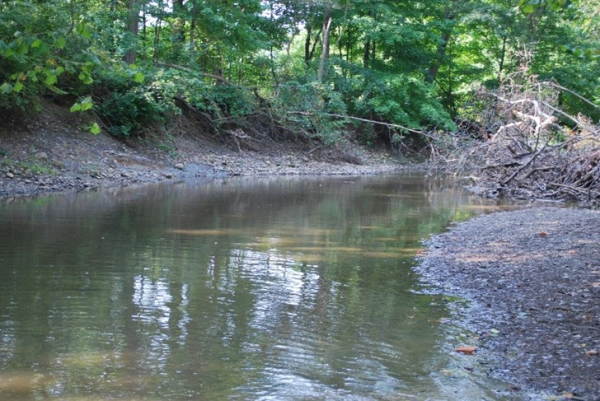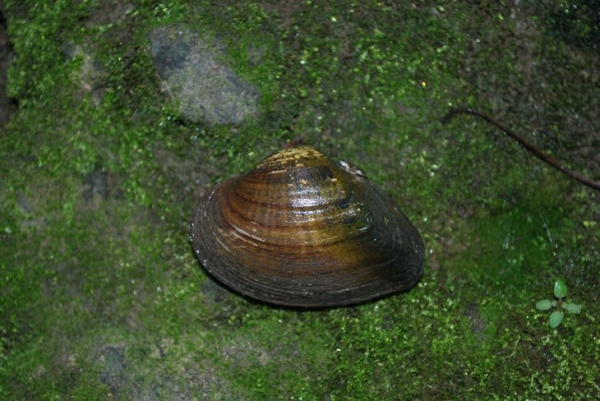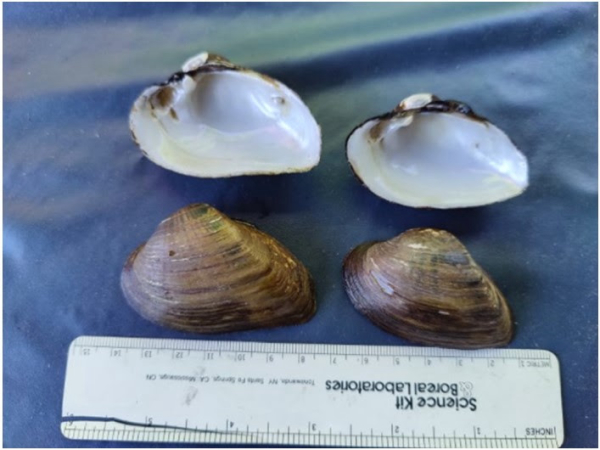

Live snuffbox mussel discovered in the Olentangy by Dr. Hoggarth in September of this year.

Original freshly dead specimens of the snuffbox mussel Epioblasma triquetra discovered by Dr. Hoggarth in the Olentangy River in June of this year.
|
Mussel Survey of Olentangy River Yields Two Federally Endangered Species
First survey of the scenic river in more than 30 years.
COLUMBUS, Ohio – In the first survey of its kind in more than three decades, the Ohio Department of Natural Resources (ODNR), Division of Natural Areas and Preserves (DNAP) Scenic Rivers Program has discovered two federally endangered mussel species in the Olentangy State Scenic River. The survey, funded by the Scenic Rivers Program, was conducted this summer.
“It’s exciting when we find wildlife in our Ohio waterways that we thought were gone, especially considering the decline of the freshwater mussels,” ODNR Director Mary Mertz said. “These surveys and discoveries like this, help us take the necessary steps to protect these species and their habitats.”
The last survey was done in 1990. Dr. Michael Hoggarth of Otterbein University conducted that survey and the most recent one. He and his team focused on the Olentangy River from the headwaters to the confluence with the Scioto River. In July, they found two shells of recently deceased freshwater mussels at a location on the Olentangy River in Marion County above Delaware Reservoir. The shells indicated there may be living specimens of the federally endangered snuffbox Epioblasma triquetra. When the group returned in September, they found a living specimen of the snuffbox and a freshly dead specimen of the federally endangered rayed bean Villosa fabalis. The last time either was found in this section of the river was at least 60 years ago.
This find will extend the protection of the snuffbox in the Olentangy River north of Franklin County where a freshly dead shell was found some distance below the Delaware Lake Dam into Marion County.
“While we were surprised to find these specimens in the Olentangy, the water quality in this section of the river has been maintained beautifully making this a great habitat for mussels and other creatures,” Dr. Hoggarth said. “The streamside forest buffer has been well-maintained and that is an essential piece of keeping the water clean and allowing aquatic species to thrive.”
This portion of the river has maintained exceptional water quality and mussels, like other animals, are habitat specialists and their habitat remains intact in this section of the river.
The complete report detailing the findings of this survey will be published before the end of this year.
Funding for the study was provided through the sale of Ohio’s Scenic River License Plates.
The Division of Natural Areas and Preserves administers 141 state nature preserves and 15 state designated wild, scenic and recreational rivers protecting significant natural features for Ohioans to enjoy in perpetuity. Research projects such as these are made possible thanks to generous contributions made through the purchase of Scenic Rivers License plates. Two specialty plates are available to help the protection of Ohio’ s wild, scenic and recreational rivers. For more information click here. Contributions can also be made year-round via check sent to the ODNR Division of Natural Areas and Preserves, Scenic Rivers Program, 2045 Morse Road, Building H-3, Columbus, OH 43229.
ODNR ensures a balance between wise use and protection of our natural resources for the benefit of all. Visit the ODNR website at ohiodnr.gov.
For more information, contact:
Stephanie O’Grady, ODNR Office of Communications
614-265-6860